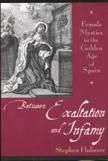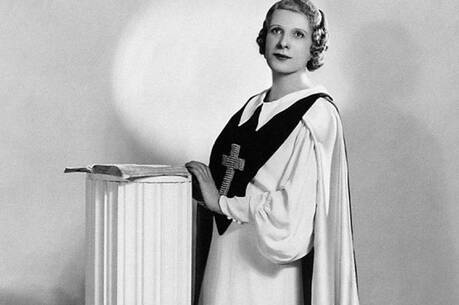Visionary Women
In this admirably researched study of women’s spirituality in 16th- and 17th-century Spain, Stephen Haliczer (Distinguished Research Professor of History at Northern Illinois University) provides a panoramic yet detailed account of women who constructed their religious identity and authority in a misogynist culture, trained from childhood through adulthood in acceptable behavior both in and out of the convent. The result is a fascinating story of how women exerted and validated their personal authority on the basis of extraordinary experiences such as visions, bilocation and stigmata, while accepting the constraints of the male-dominated society.
The claim for spiritual autonomy was abetted by the growing tendency in the Spanish church to depend on divine intervention and to turn to visionaries and prophets for advice on all kinds of problems. This widespread recourse to divine intervention and the increasing shortage of well-trained priests encouraged women to develop modes of spirituality that were uniquely theirs and that could bolster the position of a church under siege. The author’s sources are 30 biographies and autobiographies plus 15 Inquisition cases, as well as devotional and theological works and collections of nuns’ stories.
Chapters 1 through 6 examine Spanish society in the process of changing from a Latin culture dominated by men to a vernacular one, in which women strengthened the Spanish church and enhanced their own authority through such activities as establishing confraternities and devotional groups, organizing charities, catechizing and founding new religious orders. More validating for women’s authority, however, were their visions and revelations, which served to legitimate the Catholic Church against the Protestant challenge.
Ensuing chapters explore the nature of the relationship of visionary women and the church, the effects of social status on women’s fortunes as visionaries and the role of the Inquisition in determining the authenticity of extraordinary experiences. Most of the women who received official approval were of a relatively high social rank. For a woman to survive with her reputation intact, she would have to support the entire structure of power in the church as well as have the backing of local officials, belong to a religious order and be on good terms with a male superior in the order. If a woman’s confessor enjoyed a reputation for learning and wisdom, she was in a good position for success as a visionary.
In Chapters 7, 8 and 9 the author traces the development of a visionary woman from childhood through adolescence and adulthood. The last of these chapters is an analysis of the ways in which nuns developed as confident leaders even though some of them feigned their visions and revelations. Other ecstatic women, such as Madre Juana de la Cruz, strengthened their power by performance. That is, they played out their ecstatic discourse in the manner of theater. In this respect these women are reminiscent of Sor Maria of Santo Domingo, whose performances in the early years of the 16th century were reviewed and written down by men in attendance.
Chapters 10, 11 and 12 treat religious life and devotion, the play of power and impotence in nuns’ lives and the perception of sanctity. Extraordinary experiences provided Spanish women a means to transcend but not disrupt the control of the male-dominated church. In an age of religious competition, Haliczer writes, mystical transports were a sign that God still favored the devout Catholic with divine communication. If these favors were bestowed upon women in spite of their generally accepted emotional weakness, intellectual inferiority, and vulnerability to demonic manipulation, so much the better as a manifestation of God’s wonderful generosity to his faithful.
In his cogent analysis of the political, religious and societal forces that shaped religious women’s responses to a changing world, Haliczer’s study is a font of information, scrupulously researched and carefully analyzed. The use of the terms mystical and mystic, however, is misleading as applied to women who experienced all sorts of extraordinary events, none of which, in themselves, justify the term mystic. The vocabulary of mystical theology warrants careful qualification before being applied to subjects who were visionaries, yes, but not mystical lovers in the sense developed through centuries of mystical theology and given incomparable expression by the 16th-century poet and theologian St. John of the Cross.
This article also appeared in print, under the headline “Visionary Women,” in the September 1, 2003, issue.








